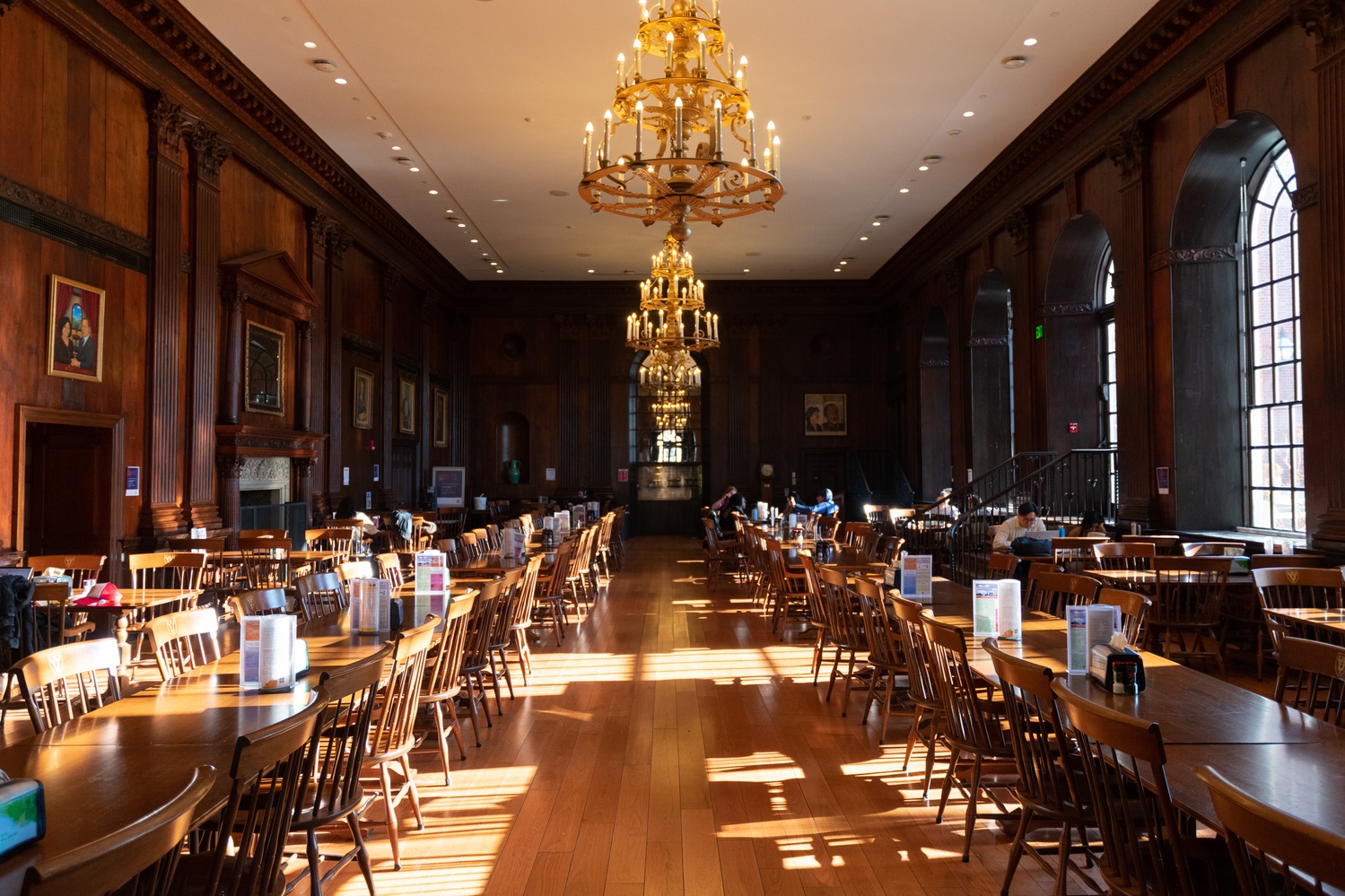
News
Harvard Students Streak Around Encampment in Cheeky Primal Scream Display

News
Freshmen Say Noise From Harvard Yard Encampment Not Disruptive, Despite DSO Email

News
GSAS Student Council Continues Board Nominations, Discusses Transportation Issues

News
Council Asks City Staff to Launch Municipally-Funded Housing Vouchers Pilot

News
‘Not Going Down Without a Fight’: Harvard Students Decry Queen’s Head Closure
Deregulate the Dining Halls

It’s Tuesday night. I try to eat in Winthrop House with a friend from Currier House. But, as he swipes his ID and is granted access to the dining hall of his sister House, the guardian device rejects me with a red flash.
“Which House are you in?”
“Pforzheimer House,” I reply meekly.
“Then you can’t eat here tonight — try Adams House instead.”
If you visit the Harvard University Dining Services website, you will be treated to a vast, byzantine matrix of dining restrictions based on House affiliation, the rows and columns barring any visitors to each River House at least one night out of the week.
Some of these restrictions are downright inscrutable to anyone who has not chosen to memorize the “Hours & Interhouse Restrictions” webpage. For instance, Dunster House: “M-W, 1 interhouse guest with resident only from 6-7:15, Dunster+Athletes in season 7:15-8:30”; “Th, Community Night until 7:15 (Dunster only), Dunster+Athletes 7:15-8:30.”
Huh?
In restricting dining to House residents, weekly “Community Nights” and other mealtime restrictions split apart friends who, by the luck of the draw, reside in different Houses. Broader campus cohesion is sacrificed to the altar of a narrower House community.
These restrictions need to go. This level of micromanagement of student dining is not only inconvenient, but entirely at odds with the goal of fostering community on campus.
“Let’s grab a meal sometime” may be the most vacuous phrase at Harvard — more a polite goodbye than an actual invitation. But the cliche betrays a nugget of truth: Campus social life revolves around dining together. Perhaps more than anywhere else, community is built over a plate of red spiced chicken or beef fajita fettuccine. This reality makes abolishing interhouse restrictions far from a trivial goal.
Don’t get me wrong: The residential House system is a positive quirk of Harvard life. Community based on a shared pride of place and frequent serendipitous encounters — however arbitrary its randomized algorithm-forged outer bounds might be — is a wonderful part of the social tapestry of this University.
However, walled-off dining halls are not the manner in which we should attempt to generate House camaraderie. If someone doesn’t want to dine with their mostly unchosen housemates, they should not be forced to.
Interhouse barriers unnecessarily restrict choice — undermining instead of meaningfully contributing to campus community. As a beneficiary (and sometimes victim) of the Quad-River sister House system, I do not feel that Harvard is fostering community when I am sent, alone, to Adams on a Thursday night, while friends from Currier can sit down in Winthrop. The maze of restrictions unfairly disadvantages those with a wider net of friends outside their House than inside it — especially as within-House friends will choose to dine as a group on Community Nights anyway.
The sister House system proves that Harvard understands that student convenience — in this case, for Quad residents spending dinner hours on the River — sometimes justifies mixing residents of different Houses even during restricted dining hours.
We need to extend that logic. Indeed, outside of avoiding overcrowded dining halls at peak hours — which can be achieved by capping, instead of outright banning, interhouse dining — no argument in favor of dining restrictions holds water.
Annenberg Hall — that melting pot that forged so many of our lasting friendships — is the perfect model for dining at Harvard. Let students make their own decisions about when and where to dine — and whom to dine with. Let the beautiful, chaotic web of our social life fully flourish during mealtimes.
Sam E. Meacham ’25, a Crimson Editorial Editor, is a Social Studies concentrator in Pforzheimer House.
Want to keep up with breaking news? Subscribe to our email newsletter.
